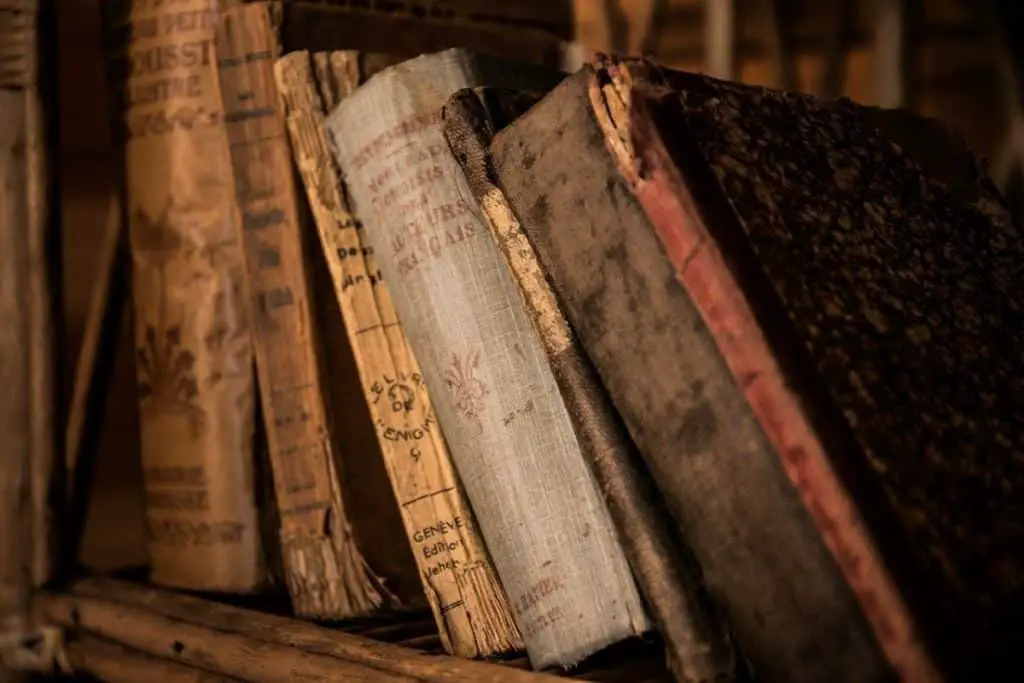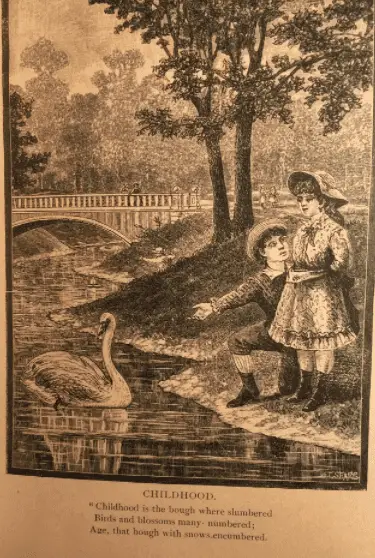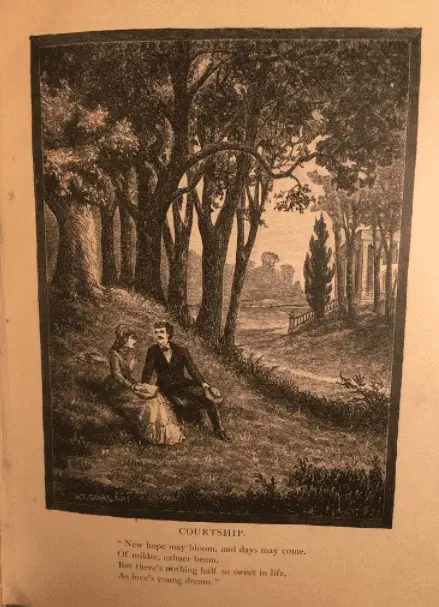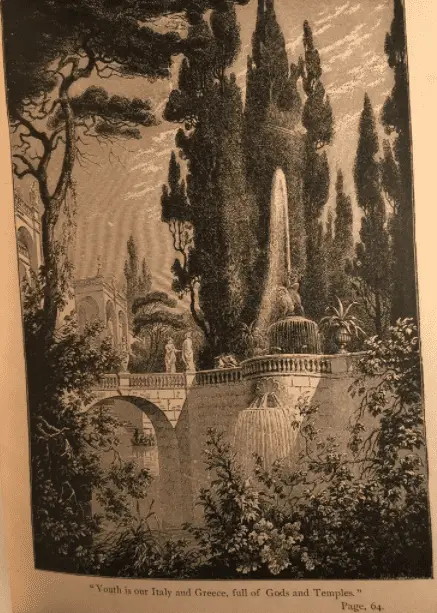One thing that has been interesting to watch with the growth of flipping channels, shows like American Picker, and the explosion of YouTube (and society’s obsession with side hustles) is watching something like antique book flipping, something that used to be incredibly niche, going very mainstream. This is to the dismay of some of us book hounds who really focused on this one area against very little competition now seeing tens of thousands of flippers armed with smartphones with a Wi-Fi connection, but truth be told I think it is a positive improvement overall.
However, antique books is one of those areas that has still managed to stay niche, in large part because there is so much misinformation about what makes an old book valuable versus what doesn’t.
A lot of people don’t want to do the training or studying it would take to learn the various ways to find valuable antique books and which ones aren’t, and there’s a lot of wrong assumptions and misinformation out there that isn’t helping things.
Not all old books are valuable, in fact most aren’t. Old books that are valuable as antiques or collectibles are usually first editions/first printings with value based on niche, rarity, condition, popularity, historical significance, and demand.

There are plenty of would be book sleuths who hit garage sales and flea markets, bought a lot of old pre-1930s books and then were disappointed to find out that the books weren’t worth anything.
While seeing titles with very old school descriptions for “new” inventions like “moving pictures show” or “Aeroplane” are exciting and interesting to history buffs like myself, this alone does not make an old book valuable.
However, if you have a good condition leather bound book from 1750…then it’s probably quite valuable.
So how do you tell the trash from the treasure? When are old books actually worth money?
Read on to find out!
First Edition Vs. First Printing
With old books that have been printed from 1900 on especially, the key is finding a book that is marked as first edition and is a first printing. There is technically a difference between the two, which are clearly marked in modern books but began getting differentiated by most publishers in the 1940s and on. So a book from 1930 might only say “First Edition” and that meant the same thing as first printing.
In modern books check out the copyright page. Try this with new books, too, and you’ll see First Edition, Third Printing. Or you’ll see First Edition, 10 9 8 7 6 5 which means it would be the 5th printing.
Unless it’s a first printing, otherwise referred to as a 1/1 or first/first, they generally won’t be as valuable. With older books you don’t run into this as often but old books from the 30’s, 40’s and on that will become something that you need to pay attention to.
There are some rare exceptions, especially when a book is especially important. An example from my own time with finding, buying, and then re-selling antique books comes in the form of To Kill a Mockingbird.
An incredible book of historical importance, argued as one of the best ever written in American literature, and the only one penned by Harper Lee. The first edition/first printing is an incredibly valuable book especially with the original dust cover. I’ve never seen a 1/1, but at one time I did get ahold of a First Edition/Eight Printing with the original dust jacket, both in surprisingly decent condition.
A collector couldn’t get a first/first, they were willing to pay just short of a gran for a 1/8 in that condition (Thanks, Grandma!), and that was one of those rare examples where the later printings weren’t worth anything even close to a first printing, but it was worth far more than just a used reading copy.
These are few and far between, but they do exist. In general, old books do need to be a first printing to actually be valuable, and if they had a dust jacket, that makes up most of the value.
Popularity of Book
The popularity of a book can make a difference especially for old books that are 19th century on. A first edition Mark Twain will be valuable regardless, but The Adventures of Tom Sawyer is going to be far more valuable than The Innocents Abroad or other lesser known works.
This is especially true if the old book had a small first printing, and then became much popular later on.
Some degree of popularity is important because if no one knows about that book that was written in 1899 then there can’t be any demand for it.
Popularity is a sliding scale when it comes to value. If an author is in his/her full heyday and selling millions of books with each new title, then there are so many first editions printed that the value could go down. Especially with books post 1950 when dust jackets started being made from better materials that held up against the test of time.
For very old books, the popularity makes a difference, especially if you’re looking for value from a title that isn’t obviously collectible.
For truly old books the sheer age might be enough because there were only so many books written, printed, and published several hundred years ago. However, a little bit of popularity goes along way especially with books from the past couple centuries.
Rarity of the Book
Part of the reason the most valuable books are valuable is because they are scarce. Known antique books that have limited print runs can be extremely valuable. This is a major reason that the most valuable books by famous authors like Ernest Hemingway aren’t any of the titles you’d recognize. While first editions of The Old Man and the Sea, or For Whom The Bell Tolls are still very valuable, Hemingway was very well known by the time those books rolled out.
So the most valuable Hemingway books are the rarest early editions before he broke out: Three Stories and Ten Poems, In Our Time, & In The Torrents of Spring.
If you said, Huh? Yup. Exactly.
In these situations rarity makes a big difference. Famous or infamous books from much older times are also likely to be more valuable based on the rarity. If there’s only 10 of something in demand versus 1,000, then it’s going to be more valuable.
Condition of the Book
Condition is one of the single most important factors when it comes to determining if an old antique book or old collectible book is still valuable. This is why many a book hound I’ve spoken with have commented that few things in life are more heart breaking than opening a book at a sale and seeing a library stamp.
The various conditions of a book are:
- New
- Fine
- Near Fine +
- Near Fine
- Near Fine –
- Very Good +
- Very Good
- Very Good –
- Good
- Fair
- Poor
Only New, Fine, Very Good, Good, Fair, and Poor are official grades, but collectors and antique book stores use the other measurements to further narrow down just how much wear or damage a book in any condition is. If you see a condition that has a slash like NF/NF- the first grade is the grade of the book itself and the second grade behind the slash is the grade of the dust jacket.
This generally applies to books in the 20th century on (and some books in the very early decades of the 1900s might not have dust jackets) and for most of these books the dust jacket is where the majority of the value lies.
If the dust jackets were made from cheap paper material and none are known to survive or very few survive and are generally in terrible condition (see the very early versions of first printing Sinclair Lewis books as classic examples) then only the book condition itself will be judged.
The better the condition, the higher the value. The worse the condition or the more extensive the damage, the lower the value will be.

Antique Book Vs Collectible Book
Sometimes a book isn’t an antique as recognized by guides or an author’s work that is widely recognized but it can still be collectible. How? There are several situations where this might be the case and old collectible books can be valuable even if they aren’t considered antique by conventional standards.
Generally there are two examples I’ve seen of this:
- Old books in a certain niche (1920s hardcover education books, medical books, etc)
- Old books that just have that “cool” or “special” touch that makes them stick out
At a flea market in Marengo, Iowa back in 2005 I found a Good copy of The Golden Censer from1884 and took a chance. What’s the set value of this book? Well to this day I don’t know because I couldn’t find a consensus on what this (then) 121 year old book was worth.
But that came later. At the flea market the math was simple. $3 for a book that had engravings like this inside:



That was an easy deal. There was also a $10 couch involved if we moved it ourselves…oh to be young in your early 20’s once again!
When I looked for the book value I couldn’t find a resource even in many, many books I had on antique and collectible books, back when an app or Google couldn’t help with that.
The condition of the outer cover wasn’t great, and the binding could use repair. It showed its age. All that said it still qualified as being on the low side of good condition and the engravings were very unique especially since most my focus was on the 20th century and you just didn’t see wood engravings in books after a certain point.
So I put a price of $300 up, displayed the engravings, gave a detailed accurate description, and sold the book 6 months later after getting negotiated down to $225.
Another example of a collectible book would be one I still have from Grandma’s collection: a 1941 hardcover of Dante’s The Divine Comedy that is large, contains multiple wood prints and artwork in the book itself, and is just a wonderfully collectible book for anyone who fell in love with Dante’s poetry, or has fond memory of those college English classes.
It’s just a really nice book, and although not antique by any conventional definition, it is quite collectible and although not a huge payday, it’s the kind of old book that eventually will find someone who appreciates it.
Old Niche Collectible Books
The other thing to look for in old books, and this generally applies to non-fiction in my experience, is for a niche that might be collectible or of interest to a very specific group.
Examples of this would be old educational hardcover books for middle school lessons from the 1930s, medical books from the 1910s, or books on trains from the early 1900s.
These were are examples of books that I put on sale at Abebooks.com back in 2005 and I thought them novel so I priced a bunch of these books from $1 and $5 boxes at auction (seriously, small town Midwest auctions, there are some incredible gems if you’re willing to look) around $25 to $30 just to see.
I didn’t know who wanted a hardcover middle school arithmetic book from 1934 or a series of medical books with illustrations rom the early 1920s, but it turned out, several.
The books sold like wildfire, so fast I knew I had badly underpriced them, but it’s hard to complain wen you’re making 2,500% profit or more (since one $1 box had at least four of these books, as I remember).
Niche books like this can be very collectible. The more specialized in this case, the better. So when you run into a lot of old books that are hardcover instructional for school, century-old college texts, or the like, those are worth keeping around as you would be amazed at some of the niches that have passionate collectors out there.
In those cases old books can be extremely valuable even if they’re not antique based on author, title, or other historical significance.
Old Books: Are They Worth a Look?
Old books hit the full gauntlet. Some can be incredibly valuable while for the majority age just doesn’t matter when it comes to actual value of the book. For me, old books are always worth a look because some could be incredibly valuable. And some are just plain cool.
Looking at old books at a flea market or garage sale is a great idea, and you never know when you might find an old treasure just waiting for the right person to appreciate it.
